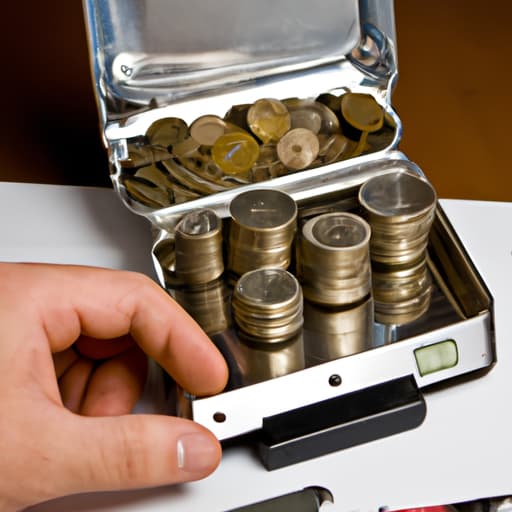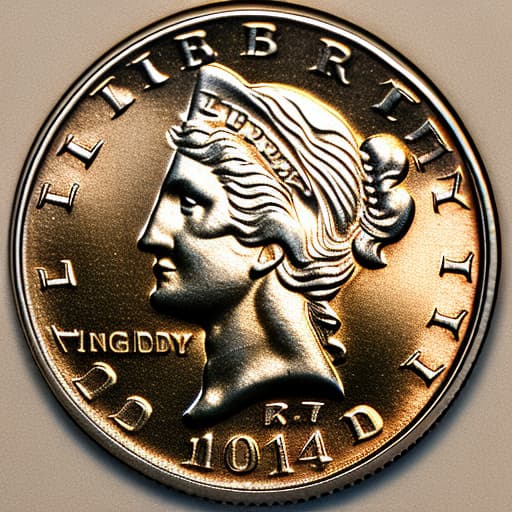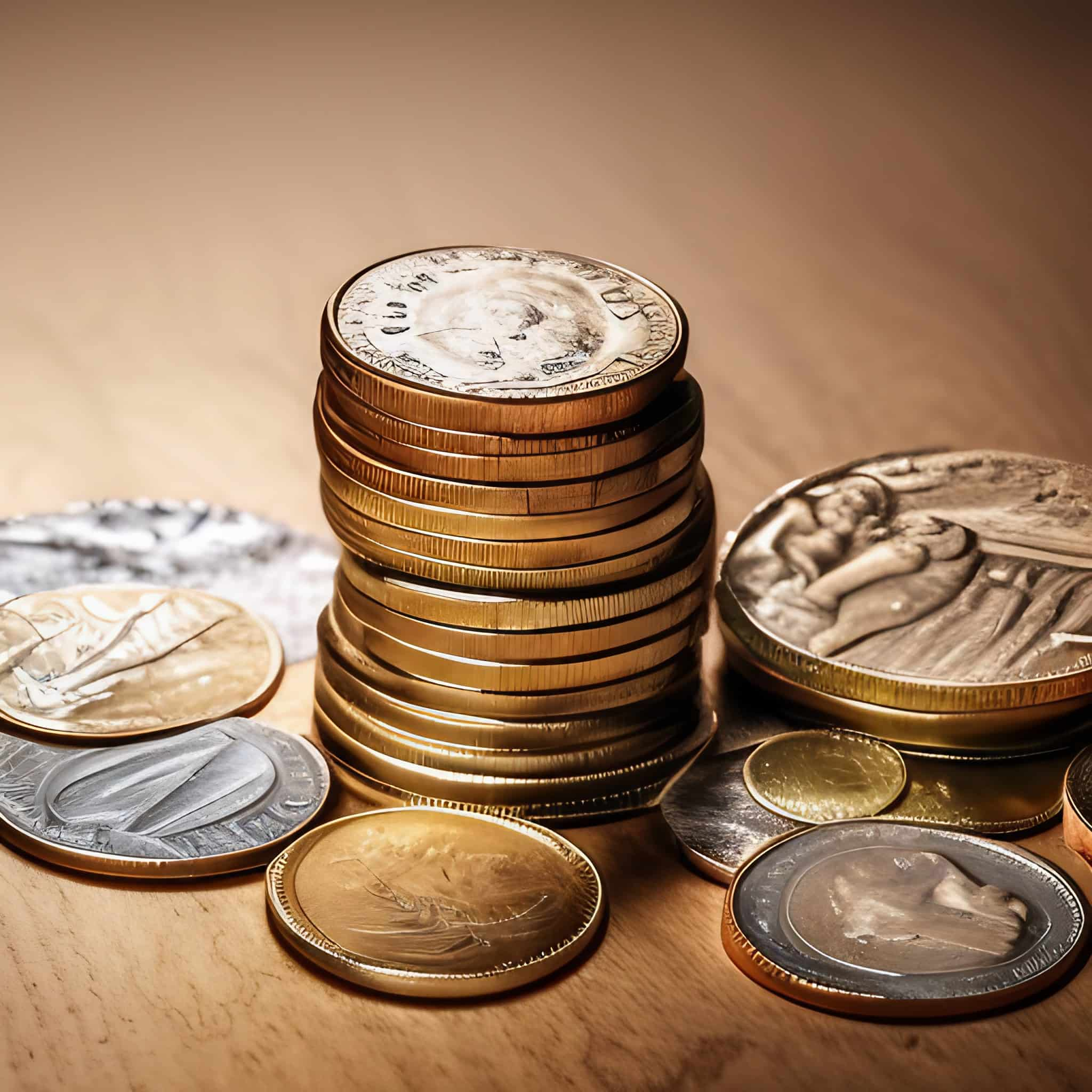Have you ever wondered how much those coins rattling around in your pocket or purse actually weigh? Perhaps you’re planning a trip abroad and need to know how much currency to bring. Or maybe you’re just curious about the weight of different types of coins from around the world.
Maybe you want to make money selling collectible coins as they are top items to sell at a pawn shop. Whatever your reason, we’ve got you covered with this quick and easy guide to coin weights. So, sit back, relax, and prepare to be enlightened about the weighty world of currency!
Understanding The Weight of Coins: A Comprehensive Guide
Coins have been around for centuries and are still widely used today. The United States Mint produces coins for circulation and collecting purposes, including the penny, nickel, dime, quarter, a half dollar, and dollar coins. The designs of these coins have changed over the years, featuring figures such as President Abraham Lincoln on the penny and President George Washington on the quarter.

Coins are used for many purposes, including making purchases, giving as gifts or rewards, and collecting for their historical or monetary value. Some coins are made of precious metals like gold or silver, which make them valuable for their weight and purity. In addition to government-issued coins, there are also commemorative coins and bullion coins produced by private mints. These coins are often limited editions and feature special designs or historical events. Despite the rise of digital payment methods, coins remain a popular form of currency due to their durability and accessibility.
They can be used in vending machines, parking meters, and other automated machines, making them a convenient choice for small transactions. Knowing how much coins weigh is important for a variety of reasons, including determining their value and ensuring accuracy in transactions. The weight of a coin is determined by several factors, including its composition, size, and denomination.
Can You Weigh Coins To Determine Their Value?
The weight of a coin does not directly determine its value. This is because coins are typically made out of precious metals or alloys, which are valued based on their market rate rather than their weight. However, it can give you an indication of the relative worth of different coins. For example, if you know that a silver dollar weighs more than a nickel, then you know that the former is worth more. A lot of people and coin collections look for silver coins, clad coins, copper-nickel clad coins, and coins that have a certain mint mark. Coins, in general, are great things to sell on eBay for profits because coins are easy to ship, and transactions are secure on eBay.
Understanding the weight of coins can also help collectors identify rare or counterfeit coins. If you have ever bought a roll of quarters online, you know they are heavy. To accurately weigh your coins at home, you will need a scale that measures in grams or ounces. It’s important to handle your coins carefully to avoid damaging them or altering their weight. In the next sections, we will break down the average weight of common coins and provide tips for handling and storing your coin collection based on weight.
Why Should You Weigh Coins? The Importance of Knowing How Much Coins Weigh
Knowing how much coins weigh is important for a variety of reasons. For one, it can help you determine the value of your coin collection. Coins are often valued based on their weight and metal content, so knowing the weight of each coin can give you a better idea of its worth. Additionally, understanding the weight of coins can help you identify counterfeit coins. Counterfeiters often use lighter materials to create fake coins, so if you know the weight of a genuine coin, you can easily spot a fake one that weighs less. Overall, having a good understanding of how much coins weigh is essential for any serious coin collector or investor.

The Different Factors That Affect the Weight of Coins
The weight of coins can vary depending on several coin specifications and other factors. Knowing the factors will help you better understand why coins have different weights.
Metal Composition
One of the most significant factors is the metal composition of the coin. For example, copper pennies weigh more than zinc pennies because copper is denser than zinc. The metal composition of a coin can affect its weight, with coins made from gold or silver typically being heavier than those made from copper or bronze.
This is because gold and silver have higher densities than copper and bronze. Density is a measure of how tightly packed the atoms in a material are. Gold and silver atoms are more tightly packed than copper and bronze atoms, so each unit of volume of gold or silver contains more mass than the same unit of volume of copper or bronze. That’s why the same size coin made of gold or silver will weigh more than one made of copper or bronze.
Coin Age and Wear
Another factor that affects coin weight is the coin’s age and condition. Over time, coins can become worn down and lose some of their weight due to wear and tear. This is particularly true for coins that are frequently used in circulation. The constant rubbing and handling can cause the metal to erode gradually, resulting in a reduction in its weight. In some cases, this can also lead to a decrease in the coin’s size as the edges become smooth and rounded over time.
The loss of weight and metal can impact the coin’s value, particularly for rare or valuable coins, where even a slight reduction in weight can significantly reduce its worth. To preserve the quality and value of coins, many collectors and coin enthusiasts prefer to store them in protective cases or other forms of safekeeping, where they are less susceptible to damage from handling and other external factors.
Size and Denomination
The size and denomination of a coin can also impact its weight. Generally, larger coins weigh more than smaller ones, and higher denominations weigh more than lower denominations. Larger coins have a greater thickness to them. For example, a quarter weighs more than a dime because it is larger and has a higher value.
It’s important to keep in mind that even small differences in weight can have a significant impact on the value of a coin. For collectors, knowing the exact weight of their coins is crucial for determining their worth and authenticity. Therefore, it’s essential to use an accurate scale when weighing coins to ensure precise measurements.
How to Accurately Weigh Your Coins at Home With a Scale
Accurately weighing your coins at home is important for several reasons, including determining their value and verifying their authenticity. To do so, you will need a digital scale that can measure in grams or ounces. It is crucial to make sure the scale is calibrated properly before use.
To weigh individual coins, place them on the center of the scale’s platform and wait for the reading to stabilize. Be careful not to touch or alter the coin while it’s being weighed, as this can lead to inaccurate measurements.
For larger groups of coins, place them in a baggie or container on top of the scale and subtract the weight of the container from the total weight displayed by the tare function. You may also want to sort your coins by denomination beforehand to determine exactly how many are in each group.

Keep in mind that when dealing with rare or valuable coins, it may be best to have them professionally authenticated and graded rather than weighing them yourself.
A Breakdown of the Average Weight of Common Coins
The weight of coins varies depending on their denomination and the metal they are made of. The average weight of common coins can help you estimate how much a handful or jar full of change might weigh. A penny weighs around 2.5 grams, while a nickel weighs 5 grams, and a dime is only slightly lighter at 2.268 grams. Quarters weigh in at just over 5.6 grams, making them one of the heaviest coins commonly used today.
If you have some foreign currency lying around, it’s important to note that coin weights can vary greatly from country to country. For example, an Australian five-cent piece weighs about half as much as a U.S. nickel at just 2.83 grams.
The Weight of Coins in the United States Chart
Find out how much coins weigh with our handy chart below on the weight of coins in the United States.
United States:
| U.S. Coin Denomination | Grams | Ounces | Pounds |
|---|---|---|---|
| Penny (1 cent) | 2.5 grams | 0.009 ounces | 0.00055 pounds |
| Nickel (5 cents) | 5 grams | 0.18 ounces | 0.011 pounds |
| Dime (10 cents) | 2.3 grams | 0.08 ounces | 0.005 pounds |
| Quarter (25 cents) | 5.6 grams | 0.2 ounces | 0.013 pounds |
| Half Dollar (50 cents) | 11.34 grams | 0.4 ounces | 0.027 pounds |
The Weight of Coins in Canada Chart
Find out how much coins weigh with our handy chart below on the weight of coins in Canada. You can see from the charts that the number of dimes that make a dollar in Canada weight less than in the US.
Canada:
| Canada Coin Denomination | Grams | Ounces | Pounds |
|---|---|---|---|
| Penny (1 cent) | 3.95 grams | 0.14 ounces | 0.009 pounds |
| Nickel (5 cents) | 4.4 grams | 0.16 ounces | 0.01 pounds |
| Dime (10 cents) | 1.75 grams | 0.06 ounces | 0.004 pounds |
| Quarter (25 cents) | 4.4 grams | 0.16 ounces | 0.01 pounds |
| Half Dollar (50 cents) | 11.25 grams | 0.39 ounces | 0.026 pounds |
Knowing the average weight of your coins is also important if you plan to sell them by weight rather than face value. Precious metals like gold and silver are often sold by weight instead since their values fluctuate frequently.
To get an accurate measurement of your coin collection’s overall weight, make sure to account for any packaging materials or display cases if present when weighing them at home using a digital kitchen scale with precision down to tenths or hundreds of a gram based on the size/weight variance for each type/denomination/type/metallicity/etc.

The Heaviest and Lightest Coins in Circulation: What You Need to Know
The heaviest coin in circulation is the Australian Kangaroo One Tonne Gold Coin, which weighs a whopping 1,000 kilograms or 2,204.62 pounds. This coin has a diameter of 80 centimeters and is made of 99.99% pure gold. It holds the Guinness World Record for the largest and most valuable gold coin ever created.
On the other hand, the lightest coin in circulation is the Japanese 1 yen coin, which weighs only 1 gram or 0.0035 ounces. This coin has a diameter of 20 millimeters and is made of aluminum.
It’s important to note that while these coins are at opposite ends of the weight spectrum, most coins in circulation fall somewhere in between. Understanding the weight of coins can help you identify them and determine their value, as well as make informed decisions about how to handle and store your collection.
Tips for Handling and Storing Your Coin Collection Based on Weight
Handling and storing your coin collection is an important aspect of maintaining its value and preserving its condition. When it comes to weight, it’s important to consider the weight of your storage containers as well as the weight of the coins themselves. If you have a large collection, it’s best to use sturdy containers that won’t bend or break under the weight of the coins. You may also want to consider using dividers or trays to keep your coins organized and prevent them from rubbing against each other.
Knowing that quarters in a roll (that have already been rolled) can be a great option for storage. When handling your coins, it’s important to be gentle and avoid touching them with your bare hands. The oils from your skin can cause damage over time. Instead, use cotton gloves or hold the coins by their edges. When transporting your coins, make sure they are secured in a padded container to prevent damage during transit.
If you’re planning on selling or trading your coins, it’s important to know their weight so you can accurately determine their value. Make sure you have a reliable scale that can measure in grams or ounces, depending on the unit of measurement used for the specific coin. By taking care when handling and storing your coin collection based on weight, you can ensure that it remains in excellent condition for years to come.
Frequently Asked Questions About Coin Weight Answered
How much do coins weigh? Here are some of the most frequently asked questions about coin weight:
What is the typical weight of a penny?
A US penny weighs 2.5 grams or .009 ounces.
How much does a nickel weigh?
The average weight of a U.S. nickel is 5 grams.
What is the weight of a dime?
A US dime weighs in at 2.27 grams on average.
How heavy is a quarter?
The typical weight for a U.S. quarter is approximately 5.67 grams.
Are there any rare coins that deviate from their standard weights?
Yes, there are various historical or commemorative coins that may differ from traditional weights and sizes.
Who determines the weight of coins?
The government mint or issuing authority determines the weight of coins. They are responsible for ensuring the coins meet the required weight standards before they enter circulation. In the case of the U.S., it is the United States Mint.
What is the weight of a dollar coin?
A dollar coin weighs 8.1 grams or 0.286 ounces. It is slightly larger than a quarter and heavier due to its size.
How much does a pound of coins weigh?
A pound of coins weighs approximately 453.6 grams or 16 ounces. This is equivalent to approximately 146 pennies, 73 nickels, 29 dimes, and 24 quarters.
Isn’t the weight of coins insignificant?
No, weight is important for counting and handling large amounts of coins, especially for banks and businesses. It is also important to determine the value of coins, as well as identify counterfeit or foreign coins. Knowing the weight of coins can also help prevent damage during storage and transportation, which is essential for coin collectors.
It’s important to note that the above figures apply only to United States currency; other countries have their own specific coin weights, which can vary widely across cultures and currencies.
Knowing how much your coins weigh can be an invaluable tool, whether you’re collecting them, selling them, or just trying to organize them effectively in storage containers/pockets, etc. Weighing your collection regularly can ensure it remains complete while also identifying if any additional pieces might have been added without your knowledge over time – keeping collectors’ minds at ease when protecting valuable collections!
In conclusion, understanding the weight of coins is an essential aspect of currency knowledge. Knowing how much coins weigh can help you identify counterfeit coins, accurately calculate the value of your collection, and even prevent damage to your coins during storage. By following the tips outlined in this guide, you can easily weigh your coins at home and become familiar with the average weight of common coins. Whether you’re a seasoned collector or just starting out, having a comprehensive understanding of coin weight will undoubtedly enhance your experience with currency.




